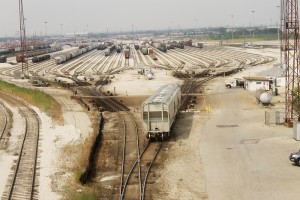 Belt Railway Company employees worked intelligently during 2013, making it the safest year on record.
Belt Railway Company employees worked intelligently during 2013, making it the safest year on record.
The injury-frequency ratio for the year was 0.70. The ratio is calculated by tallying the reportable injuries per 200,000 man-hours. The best record in the history of the Belt was in 1882.
A safe record doesn’t come about magically, said General Counsel, Secretary and Director of Human Resources Tim Coffey. A multitude of variables unite to ensure a safe environment.
“It’s a joint effort by all departments,” he said. “There are safety contacts and safety briefings; it’s a constant safety theme.”
Complying to proper procedures and rules also is key to keeping employees safe.
Adding to 2013’s impressive safety record was that it was achieved during one of the most brutal winters in Chicago history, according to Coffey. The past season saw the city blanketed with enough snow to make it one of the top three snowiest winters in history.
“It’s been tough,” he said. “It affects the ability of our employees to do what they do best—move trains safely and efficiently.”
When a location has 2,500 cars come through daily, winter weather can slow efficiency and pose potential safety risks as employees inspect railcars, fuel locomotives, make repairs and build new trains to be moved to various locations, both within and outside of the Chicago Terminal.
“We’re one of the biggest and busiest yards in North America,” Coffey said. “Cold weather and snow are not conducive to efficient railroading.”
Harsher conditions resulted in crew and equipment shortages for BRC’s user railroads, resulting in train arrival and departure delays. Despite rough weather, BRC reported only one minor injury this winter.
“It’s a tribute to all Belt employees,” Coffey said.
